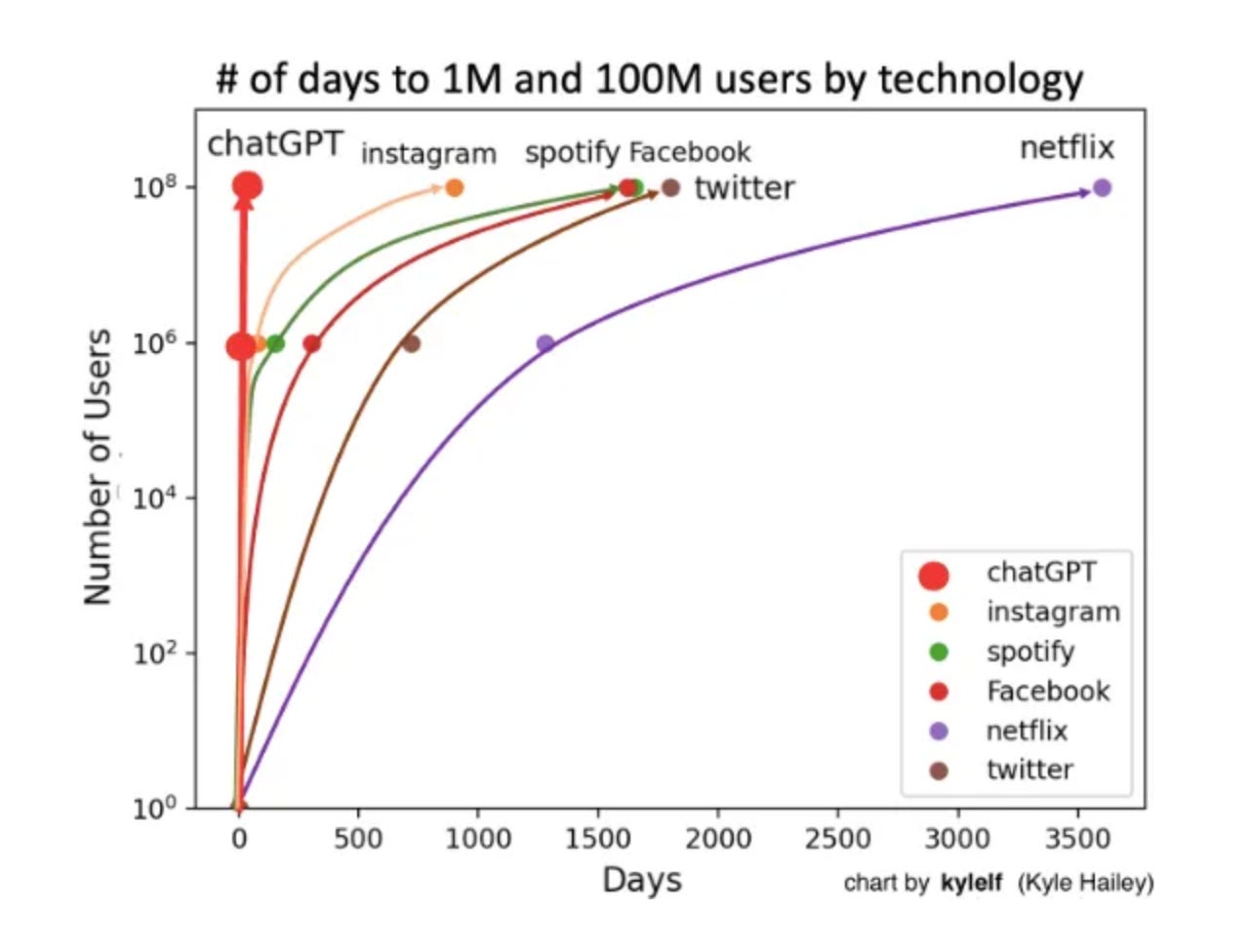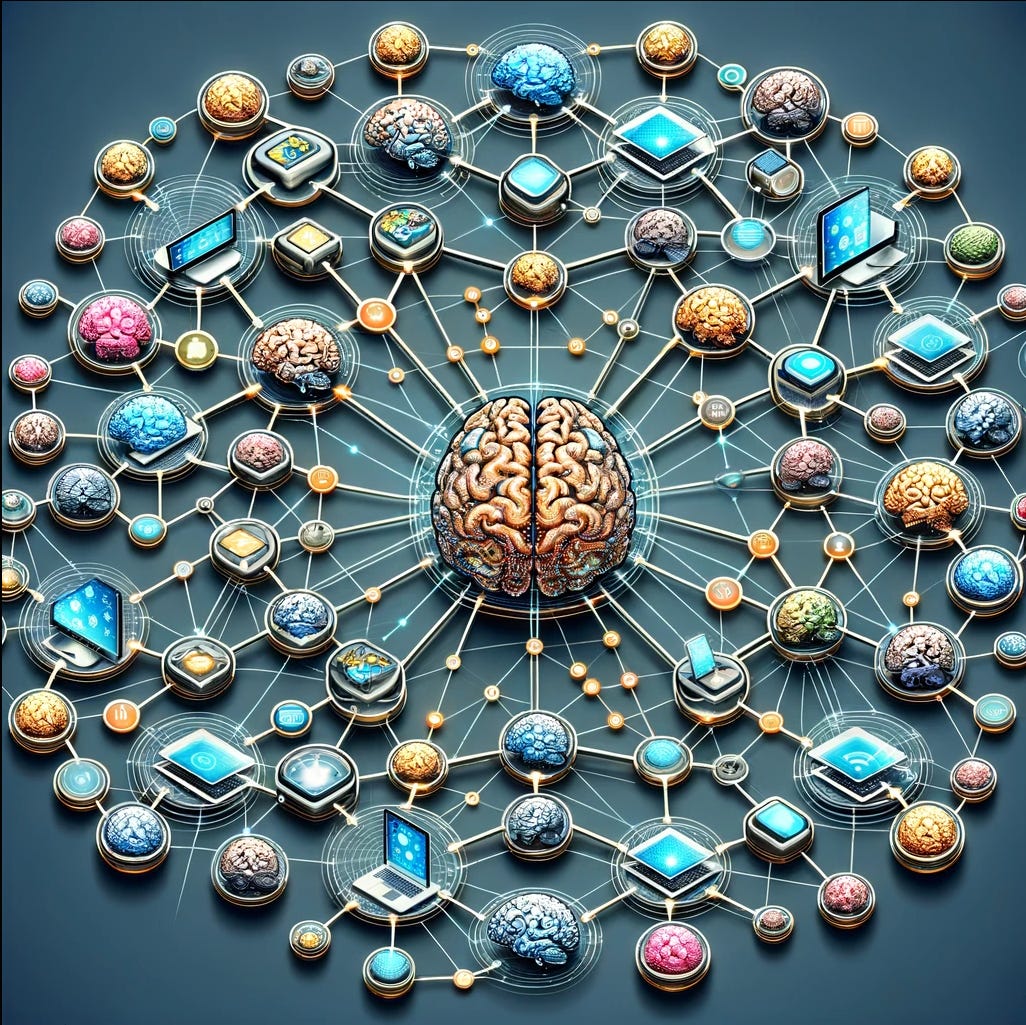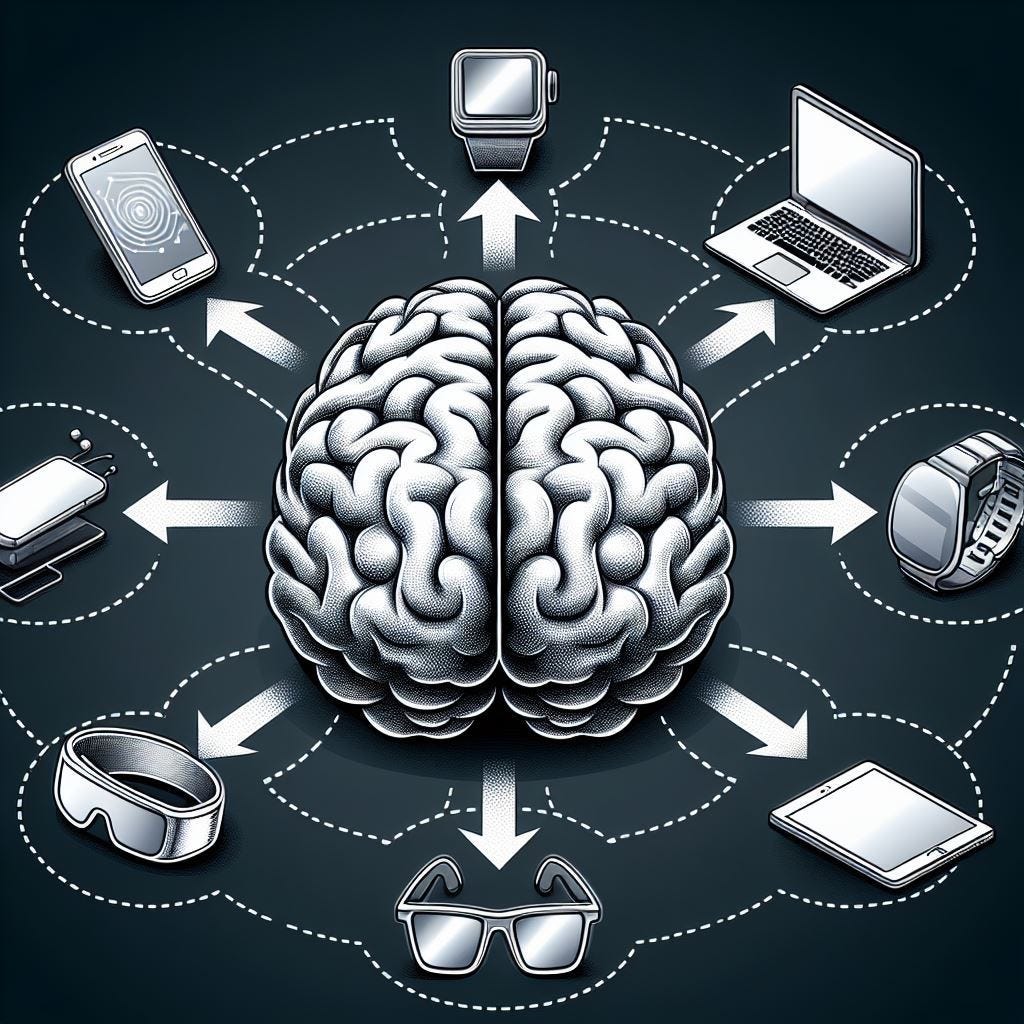Today, we explore the future of human cognition, as we delegate increasingly advanced “thinking tasks” to generative AI technologies. Examples include generating illustrations for this episode using DALL-E 3, and synthesizing key insights from a research paper using ChatGPT. We offer a practical toolkit to help us build gen AI solutions that extend, rather than replace, human cognition, increasing user value and elevating user experience. This episode is a summary of a recent talk I presented at IDEO, for executives identifying new opportunities to leverage gen AI across a range of verticals.
This time, it’s different
Gen AI is unique, relative to technologies that came before, when it comes to the potential to extend - but also potentially, replace - human cognition.
First, gen AI is growing at unprecedented rates, with problem and solution space advancing in parallel at extraordinary speed. For instance, ChatGPT reached 100MM users in less than 2 months - compare to giants like Instagram, Spotify, and Facebook taking years to reach this same milestone. Many gen AI solutions (like ChatGPT) have the potential to solve for a vast array of user problems - sometimes, more than people building these technology solutions knew existed.

In addition, gen AI enables a new generation of UX by shortening the loop between user intent and desired output. As we’ve discussed in episode 13, New AI-powered devices like the Rabbit R1 pocket companion help us accomplish our goals more quickly and intuitively, allowing us to tell it what we want to do (e.g., find the best time to schedule lunch with a colleague), and the device - on the backend - coordinates between apps (e.g., calendar, restaurant reviews, email), simply offering us lunch options - no apps or taps required.

What gen AI means for human cognition
Gen AI enables us to delegate increasingly advanced “thinking tasks” to machines at an unprecedented rate. This delegation phenomenon is called cognitive offloading - something often viewed as inherently bad, making us less intelligent. For example: take away Google Maps, and I lose the ability to navigate even in a familiar city. Cognitive offloading goes into ‘10x’ mode with AI technologies that can do “thinking things” like carry on conversation, create images, and distill key insights from a text. Is cognitive offloading really all bad, something to be avoided? Not exactly.
When we adopt a new technology tool, it changes what we focus on (and relatedly, our behavior). As we’ve talked about in episode 9, we can understand this shift using the framework of distributed cognition: that is, cognition doesn’t only exist in our individual minds, but across the members of a social group, between people and their material environments (including their technology tools), and through time. Returning to the Google Maps example: I have a mental representation of my destination, and distribute the ‘navigation’ part of cognition to Google Maps to get me there.
Don Norman - author of UX classic, Design of Everyday Things, has praised technology’s ability to distribute cognition: “Does the fact that I can no longer remember my own phone number indicate my growing feebleness? No, on the contrary, it unleashes the mind from the petty tyranny of tending to the trivial and allows it to concentrate on the important and the critical”.
My position on cognitive offloading is can have a positive impact on people’s lives, only if we intentionally design to extend human cognition. To do this, we must consider downstream effects of new technologies on how we move through the world. For instance, the smartphone unlocked incredible human capabilities. However, it also turned us into people hunched over our screens, reducing engagement in our present, physical environments. Is the juice worth the squeeze for users? For society? What about when it comes to generative AI?
A case study: the future of design
To answer these questions, I look to a case study of how this question manifests for the future of design. As an adjunct lecturer at Berkeley, my students often ask me if they should still pursue a career in design given the exponential growth of gen AI tools that seem to obviate technical design skills like illustration and videography - think MidJourney and Sora. My answer is yes - a design practitioner’s role is evolving to become increasingly important in this AI-generated future.
When we adopt a new technology tool, it changes what we focus on (and relatedly, our behavior). Applying this to user experience design, this looks like a redefinition of craft. Craft will get redefined, from hours spent capturing and editing, to bigger-picture orchestration, using a tool like Sora, which can output detailed, high-definition film clips up to a minute long based on short text descriptions.

A consequence of redefining craft is refocusing from interaction design to broader systems design - a highly strategic role that I don’t see getting replaced by AI anytime soon. This shift towards systems thinking will extend to other disciplines, if we intentionally design to extend human cognition.
A toolkit for extending human cognition with gen AI
Make your own Fitts List
Paul Fitts was a psychologist who conducted pioneering research on human factors engineering. He invented the “Fitts List”, which describes what humans are better at, versus what machines are better at. The image below shows tasks Fitts deemed were the respective strengths of people and machines. For example, humans are better at reacting to low-probability events (e.g., accidents), while machines are better suited for tasks what require sensitivity to stimuli beyond the human perceptual system’s capabilities (e.g., infrared).
You can create your own Fitt’s list to your product area, to identify use cases that AI is best suited to solve. For instance, in the medical field, gen AI is well-suited for around-the-clock monitoring and anomaly detection for patients in an intensive care unit, whereas healthcare professionals are best suited to help patients once an anomaly is detected.
Refocus to “people + AI” value
Reframe your thinking to maximizing the sum rather than the parts. We can see an example of this in Stanford professor Erik Brynjolfsson’s remarks at a 2012 meeting of the National Academy of Engineering: the best chess player in the world is a team of humans and computers working together, rather than just a computer or a human. Garry Kasparov, chess grandmaster, describes the results of a 2005 freestyle chess competition: Human strategic guidance combined with the tactical acuity of a computer dominated over Hydra, a chess-specific supercomputer. In other words, the winners were those who used the unique skills of humans and computers to complement each other.
A recent study on gen AI, human creativity and art supports this refocusing on the sum, rather than the parts. Utilizing a dataset of over 4 million artworks from more than 50,000 unique users, the research showed that over time, text-to-image AI significantly enhanced human creative productivity by 25% and increased the value by 50%, as measured by the likelihood of receiving a favorite per view. Artists, leveraging gen AI, gave rise to “generative synesthesia”— the harmonious blending of human exploration and AI exploitation to discover new creative workflows. To identify what human versus gen AI capabilities you could combine in your product area, you can leverage your newly-created Fitts List, looking for synergies between columns.
Use Augmenting Cognition ideation prompts
We offer three prompts you can use, either before building your gen AI solution, or to pressure-test existing solutions, to ensure they’re helping extend human cognition:
What human challenges can we face better with your product than alone (or, than with existing products)?
What cognitive capabilities does your product unlock for people — something they couldn’t do as well before using your product?
What capabilities does your product replace, and what does that mean for the user and the people around them?
These can be used as discussion prompts, or in a more formal workshop context (e.g., where you generate ideas, cluster themes, and summarize key insights).
Summary
As we stand at the threshold of a transformative era with gen AI, our journey forward is not about replacing human cognition but amplifying it. To this end, we must intentionally build gen AI solutions in order to extend human cognition. Doing so can reap benefits like increased user value and elevated UX. We’ve shared three tools you can start using today, to help your team more intentionally build these solutions.
Human Computer Interaction News
How people are using GenAI: Looking through thousands of comments on sites such as Reddit and Quora, the Harvard Business Review found that the use of this technology is as wide-ranging as the problems we encounter in our lives. The 100 categories they identified can be divided into six top-level themes: Technical Assistance & Troubleshooting (23%), Content Creation & Editing (22%), Personal & Professional Support (17%), Learning & Education (15%), Creativity & Recreation (13%), Research, Analysis & Decision Making (10%).
Engineering household robots to have a little common sense: MIT engineers enabled robots to self-correct after missteps and carry on with their chores. By integrating robot motion data with large language models' (LLMs) “common sense knowledge”, the robots could parse household tasks into subtasks and adapt to disturbances within a subtask.
LLMs use a surprisingly simple mechanism to retrieve some stored knowledge: MIT researchers discovered that LLMs like those used in ChatGPT often retrieve stored knowledge using a surprisingly simple linear function. By identifying linear functions for different facts, researchers could probe the model to see what it knows about new subjects, and where within the model that knowledge is stored. Implications of this research include identifying and correcting stored knowledge, helping prevent an AI chatbot from giving false information.
Looking for opportunities to extend human cognition with your gen AI solution? Sendfull can help. Reach out at hello@sendfull.com
That’s a wrap 🌯 . More human-computer interaction news from Sendfull next week.








